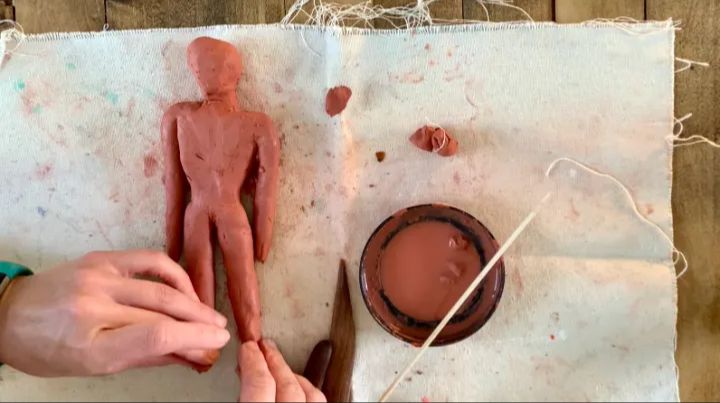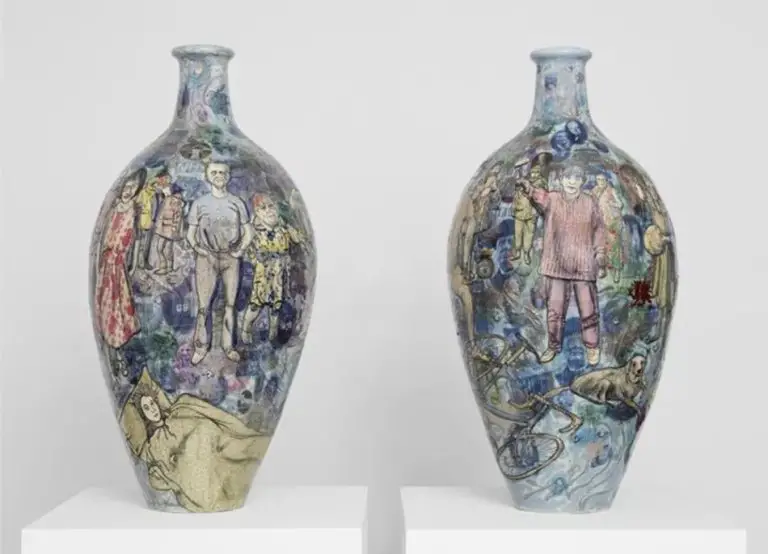What Can I Use Instead Of Modelling Clay?
Modeling clay is a type of clay that is often used by children and artists for sculpting and molding into various shapes and figures. Some of the most popular brands include Play-Doh, Sculpey, and Fimo. Modeling clay is appreciated for its bright colors and ability to be reshaped over and over again without drying out.
However, modeling clay can be expensive to purchase repeatedly. Additionally, due to supply chain issues caused by the pandemic, some types of modeling clay have been difficult to find in stores. For art teachers and parents looking for an accessible, affordable alternative, several options exist for making homemade clay for kids to enjoy.
Flour and Water Dough
One of the easiest homemade modeling clay alternatives you can make is a simple dough from flour, water, and salt. To make flour dough, combine 1 cup of flour, 1/3 cup of salt, and 1/3 cup of water. Mix together thoroughly until a soft dough forms. You can adjust the amounts as needed to achieve the desired consistency.
The benefits of using flour dough is that the ingredients are cheap and easy to find. You likely already have everything you need in your pantry. It’s also very customizable. You can add food coloring or essential oils to create scented dough. However, a drawback is that flour dough dries out quickly. It needs to be stored in an airtight container or plastic wrap when not in use. The dough can also get flaky or crumbly if overworked, so it may not be as smooth and malleable as clay.
Playdough
Playdough is a popular alternative that can be store-bought or homemade. It’s made from flour, salt, cream of tartar, oil, and food coloring. The ingredients are mixed together and cooked on the stove until it forms into the familiar pliable dough.
Playdough has several pros as a modeling clay alternative. It’s fun, soft, and malleable so kids enjoy sculpting with it. Playdough is also reusable if stored properly to prevent drying out.
However, playdough contains wheat flour so it’s not suitable for anyone with gluten sensitivities. It also tends to dry out over time and become less pliable. Storing playdough in an airtight container can help extend its lifespan.
Air Dry Clay
Air dry clay is a ceramic clay that hardens as it dries in the air rather than requiring heat from an oven or kiln. It’s an affordable and accessible alternative to traditional polymer clay or firing clay. Air dry clay is made from natural materials like clay, cornstarch, and flour. When mixed with water, it can be molded into shapes just like regular clay. As it dries, it hardens while still retaining some flexibility. Air dry clay is an excellent choice for beginner clay artists or kids craft projects.
Some of the main benefits of using air dry clay are that it’s reusable if kept moist and maintains its shape well without sagging or distorting as it dries. Pieces made from air dry clay are lightweight yet durable. The clay can be painted once fully dried and continues to harden over time. Projects made with air dry clay can last for years.
However, there are some downsides to be aware of. Air dry clay takes longer to fully harden compared to clays that require baking. Pieces may take 24-48 hours to dry completely, which requires patience. The clay also has a tendency to crack as it dries if pieces are too thick or dried too quickly. Proper storage by keeping unused clay moist in an airtight container can help minimize cracking.
Overall, air dry clay is one of the most convenient and mess-free clays to use for crafts and creative projects. With a few precautions, it can be molded into beautiful decorative or functional pieces with excellent results.
Paper Mache
Paper mache is a popular homemade modeling material that consists of strips of paper soaked in a paste made of water and flour, wallpaper paste, or glue. The moistened paper strips are layered over a form to create a sturdy, lightweight sculpture.
Some pros of paper mache include:
- Inexpensive – Paper mache uses common household items like flour, water, and paper, keeping costs low.
- Lightweight – Paper mache creations are lighter than clay since they have paper rather than clay as the base.
Some cons of paper mache include:
- Messy – Working with wet paper and paste can get messy.
- Less durable – While paper mache creations can be quite strong, they may not hold up as well as fired clay over time.
Cold Porcelain
Cold porcelain is a homemade clay made from just cornstarch and glue. Unlike many homemade clay recipes, cold porcelain hardens without the need for baking or air drying. The main ingredients are cornstarch, which provides structure, and white school glue, which acts as a binder. Additional ingredients like lemon juice or oil can also be added.
Cold porcelain has some great advantages as an alternative to modeling clay. It results in a very smooth, flexible clay that’s easy to sculpt. Finished sculptures made from cold porcelain have a porcelain-like finish once hardened. The clay is also reusable if kept wrapped in plastic so it doesn’t dry out. Leftovers can be re-kneaded and used again.
On the downside, cold porcelain recipes do take some skill to perfect. The cornstarch to glue ratio needs to be just right to achieve the best consistency. Too much glue can make the clay sticky and hard to work with. It may take some trial and error to get the proportions right. Cold porcelain also takes longer to harden completely than clays like air dry clay.
Bread Dough
A fun alternative to modeling clay is regular bread dough or salt dough. Since it’s made from simple kitchen ingredients like flour, water, yeast, and salt, it’s completely edible. This makes it a great sensory material for young kids. They’ll have fun squishing, pounding, rolling, and shaping the soft dough.
The downside is that bread dough doesn’t hold its shape for long. The yeast causes it to expand, so creations will puff up as the dough proofs. Sculptures will also become stale and perish within a few days. And the soft texture can only be shaped into simple forms, not fine details.
Self-hardening Clay
Self-hardening clay is a type of polymer-based modeling clay that hardens when left out in the air. Unlike traditional clays like ceramic clay, self-hardening clays do not require baking. The clay hardens as the water content evaporates.
Self-hardening clays provide a smooth finish and can be repeatedly softened and rehardened, making them very reusable. Many brands like Crayola’s Model Magic do not dry out completely, allowing artists to continue reshaping a project indefinitely.
On the downside, self-hardening clays tend to be more expensive than simple homemade clays. They also can get sticky as they start to dry, which makes smoothing and reshaping more difficult.
Homemade Clay
Homemade clay is a popular alternative that can be created from simple kitchen ingredients. It is made by mixing together baking soda, cornstarch, and water. Some recipes may also include cream of tartar, vegetable oil, or lemon juice.
The advantages of homemade clay are that it allows for creativity, as you can experiment with different recipes and ingredients to achieve desired textures and colors. It is also educational for kids, as they can be involved in making their own clay. Since it uses common household items, it is inexpensive and accessible.
The downside is homemade clay recipes take some experimentation to get right. The clay may be too sticky, crumbly, or not mold as well compared to commercial modeling clay. Sculptures made from homemade clay also tend to be less sturdy and durable than kiln-fired clay.
Conclusion
There are several readily available alternatives for those times when you don’t have modeling clay on hand for arts and crafts projects. The top alternatives covered here included flour dough, playdough, air dry clay, paper mache, cold porcelain, bread dough, homemade clay, and self-hardening clay. Each has their benefits and drawbacks when compared to commercial modeling clay.
When choosing a modeling clay alternative, consider the cost, availability of ingredients, drying time, and appropriateness for the specific project you have in mind. Simple homemade doughs made from pantry ingredients can be great for play and temporary sculptures. Air dry clays produce more durable results but take longer to dry fully. Your creativity doesn’t have to be halted when you run out of modeling clay, as most households likely have ingredients around to whip up a usable substitute.
The alternatives covered here are meant to encourage resourcefulness and spur creativity. Don’t be afraid to experiment with whatever you have on hand to produce your own homemade modeling clay substitute for arts and crafts projects.



